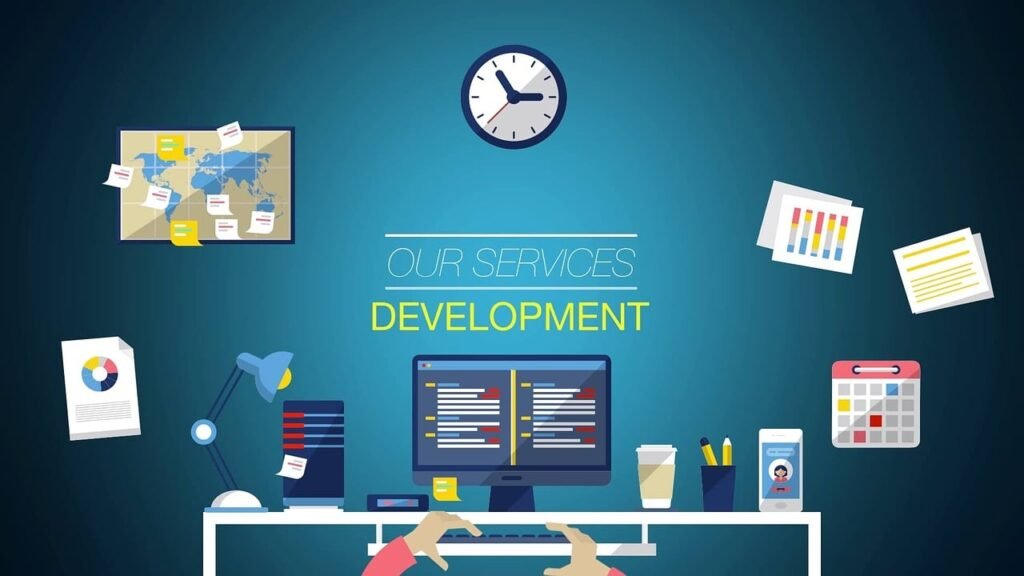IT services management best practices and its role
An effective ITSM equals seamless IT operations at an organization. ITSM enables Strategic workflow and management to yield solutions that are flexible, scalable and affordable.
The world is under the digital transformation radar. From simple digitalization of data and paper-based files to the amalgamation, automation and digitalization of systems and business processes, digitization has penetrated our course of daily activities.
Let us understand in the upcoming sections, the role of ITSM in digital transformation and some of the best ITSM practices to cater to your business needs.
How ITSM is impacting the digital transformation?
is an umbrella term for initiating, designing, planning, implementing, operating, delivering and controlling IT services to the customers in efficient ways.
The business processes across the globe are witnessing automation and digitalisation interventions which are resulting in information and data management a simple, hassle-free job. The top authority in companies can access the vital data from all levels and areas of the organisation delivered through dashboards or business intelligence (BI) tools. As a result of which, they can make an operational and critical decision in a timely fashion together with transparency.
ITSM plays a primary role in helping businesses deliver digital transformation in their processes. In this digital era, the approaches ITSM provides are equally important as the ‘technology change’.
ITSM is a job of order and method. It addresses strategy. An effective ITSM considers facts such as ‘the business needs’, ‘the stakeholders’, and ‘the goal’. It examines service design. ITSM understands that the digital transformation is majorly for the entire business/organisation change and not just IT. ITSM rectifies and promotes the need for digital transformation and associated benefits. It also addresses that these benefits could be measured constructively.
ITSM makes the transitional process relatively easy. E.g. in release management, ITSM addresses the pace, skills, release testing and facilitating requirements with regulation/legislation. ITSM drives businesses to focus on change management. It provides appropriate approvals, thereby minimizing risks.
ITSM professionals face challenges while supporting digital alteration. Commonly, the projects involved are not genuine IT projects but the organisational projects. It requires IT people, process managers and practitioners to acquire training and skill development to manage business transformation and organisational change management (OCM).
ITSM is slowly and steadily changing the digital scenario for the businesses. WaysNX Technologies has a team of ITSM professionals to look after your needs and lay smart solutions for your business.
In the following section, we are discussing the best ITSM practices.
5 ITSM best practices:
We are listing a few best ITSM implementation practices which mirror our expertise and experience that we gathered on providing successful deliveries.
Customers first:
Organisations usually state risks and costs based on the requirements and the clients. When it comes to ITSM, it is important for them to assign values and importance to the products and services relative to consumers. The better the services, the greater the results.
Measure quality:
To measure the quality of the services, the ITSM service providers need to have metrics tied to your service level agreement. You, as a customer will assess the service based on how useful it is and the consistency of the support.ITIL views the following four questions as a ‘perspective of quality’ from the customer’s point of view:
- How good is the service?
- Does it provide value?
- Does it meet the specifications?
- Does it meet or exceed expectations?
We take into account these questions to ensure customer satisfaction. It allows us to improve the IT operation in accordance with the customers’ needs.
Manage demand:
ITIL proposes three stages of Demand management. Those are:
- Usage analysis: examine the number of problems (issues/IT incidents) and requests to understand where you as a service provider investing the most time in.
- Anticipation: talk to the customer about the annual objectives viz. marketing, sales, operations, management and human resources to make sure you’re prepared for an unforeseen fluctuation, be it positive or negative.
- Adjustments: Be ready for any unexpected change requests. If a customer unexpectedly changes the usage of the service, always say yes to adjustments.
Anticipate ‘Change’:
There cannot be a ‘one-size-fits-all’ situation with ITSM. There is no such thing as the perfect process for all businesses. Requirements vary from time to time, customer to customer, and business to business. Consider studying previous records of losing on customer delight due to certain process not delivered, poorly built, or ignored. Hence with every changing customer generate the pilot process first and then build the solution around it. Every product and client is unique, so the solution has to be unique.
Build a service improvement plan:
Bringing on improvement and finding the critical areas of the service which need improvement is and has always been challenging. That’s why there’s an entire book in the ITIL collection. One thing of vital importance is to know and understand the changing need of customers with regards to IT. Queries such as ‘Customers’ short term long term goals, their vision, how to make them reach where they want to go’ will help to determine where they stand now. The ITSM providers must hand out a list of actions to the client to reach their objectives. This should be a recurring cycle to precisely administer which areas need improvement, which areas are fine and which processes to add or remove.
Conclusion
Jumpstarting ITSM is not easy. Achieving the right mix of the strategies is crucial. We at WaysNX Technologies work with our clients, as their extended team to materialize organizational goals. We strive to go beyond the service providing and get involved in our customers’ business processes. To recapitulate, we provide efficient and optimum ITSM services to, in turn, ensure smooth IT operations.

